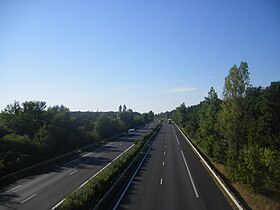

Palma, as well as Angers, but may be more recently, implemented the promotion of cyclable lanes. The first ways dedicated to bikes circle the city while a few ones go throughout down town. And some aspects of that policy could be useful to apply in Angers.
The cyclables ways, outside inner city, use the former pavements. Distinctive by colors, materials and road signs, they allow the pedestrians to walk safely if they don't use the surface dedicated to bikes. Bikes and pedestrians are along each others when both have to cross a street. Lights indicate when they are prior or no prior to cars. These ones seem very respectful of the rules protecting the bike traffic.
In town, when it is not possible to use part of the pavements, bikes circulate on the streets in an distinct and protected lane. Even the buses and cabs can't use this way, making it safer. Bikes are parked in special zones which the number and the design could yet be improved. But the most ingenious scheme is the two cyclables lanes are together in the same side of the road making tjme more visible and less costly to create.









